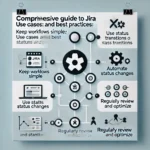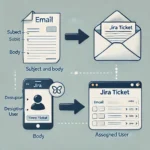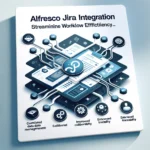Fedora Linux, known for its open-source ethos and flexibility, empowers users to create personalized computing experiences. If you’re a developer with a penchant for customization, you can harness the power of Flutter to craft a unique desktop environment for Fedora Linux. In this comprehensive guide, we’ll take you through the steps to create your custom Fedora Linux desktop environment using Flutter.
What is Flutter?
Flutter, developed by Google, is an open-source UI toolkit that enables the creation of natively compiled applications for mobile, web, and desktop platforms. With its expressive widgets and single codebase approach, Flutter simplifies cross-platform app development.
Prerequisites
Before diving into building your custom desktop environment, make sure you have the following prerequisites in place:
- Fedora Linux: Ensure you have Fedora Linux installed on your machine. If not, you can download it from the official Fedora website.
- Flutter: Install Flutter by following the step-by-step instructions provided in the official Flutter installation guide.
- Linux Development Tools: Depending on your project’s requirements, you may need to install additional Linux development tools and libraries using Fedora’s package manager,
dnf. Be prepared to install them as needed throughout your project.
Steps to Create Your Custom Fedora Linux Desktop Environment with Flutter
1. Project Setup
Initiate your project by creating a new Flutter project or using an existing one. You can start a new project using the following Flutter command:
flutter create custom_desktop_environment
2. Design Your UI
Leverage Flutter’s extensive widget library to design your desktop environment’s user interface. Flutter offers a rich array of widgets to create customized layouts, buttons, menus, and more. Dive into the Flutter documentation to explore widget options and best practices.
3. Platform Integration
For a seamless desktop experience, consider integrating with Linux-specific desktop features like system notifications, system tray icons, or global hotkeys. Flutter supports platform-specific plugins and packages that provide Linux-specific functionality. Explore available Flutter packages and plugins or develop your own as needed.
4. Testing
Thoroughly test your custom desktop environment on Fedora Linux to ensure compatibility and usability. Flutter simplifies this process by enabling you to run your application in desktop mode with the following command:
flutter run -d linux
5. Package and Distribute
Once you’ve fine-tuned your custom desktop environment, package it for distribution. Flutter offers tools to package your application in popular Linux formats, such as AppImage or Flatpak. These formats facilitate distribution to Linux users.
6. Installation
Make your custom desktop environment package available to Fedora users through well-established Linux app repositories or other distribution channels. Fedora users can then install and enjoy your tailored desktop experience on their systems.
Tips for a Successful Desktop Environment
- User Experience (UX): Prioritize user experience. An intuitive and well-designed interface can significantly enhance the appeal of your desktop environment.
- Performance: Optimize your code and UI for performance. Linux users appreciate desktop environments that are snappy and responsive.
- Community Engagement: Engage with the Fedora and Linux community. Seek feedback, address issues, and consider open-sourcing your project for collaborative development.
- Documentation: Create clear and concise documentation for installation and usage. Detailed documentation can help users get started and make the adoption of your environment smoother.
Embarking on the journey to build your custom desktop environment for Fedora Linux with Flutter is a rewarding and creative endeavor. Flutter’s versatility combined with Fedora’s customizability provides the perfect foundation to craft a desktop experience that aligns with your vision.
Whether you’re developing for personal use or aiming to share your creation with the Linux community, Flutter offers a powerful framework to bring your dream desktop environment to life. Start your project today and unlock the potential for customization that Fedora Linux and Flutter offer.
Happy coding, and may your Fedora Linux desktop environment be a masterpiece of personalization!
External Links:
FAQs
1. What is Flutter?
Flutter is an open-source UI toolkit developed by Google for building natively compiled applications for mobile, web, and desktop platforms.
2. How can I install Flutter on Fedora Linux?
You can follow the official Flutter installation guide to install Flutter on your Fedora Linux system.
3. Can I integrate Linux-specific features into my custom desktop environment built with Flutter?
Yes, you can integrate Linux-specific features into your custom desktop environment using Flutter’s support for platform-specific plugins and packages. These allow you to access and utilize Linux-specific functionalities seamlessly.
4. How can I package my custom desktop environment for distribution on Fedora Linux?
Flutter provides tools to package your application in popular Linux formats such as AppImage or Flatpak. You can then distribute these packages to Fedora users through established Linux app repositories and distribution channels.






